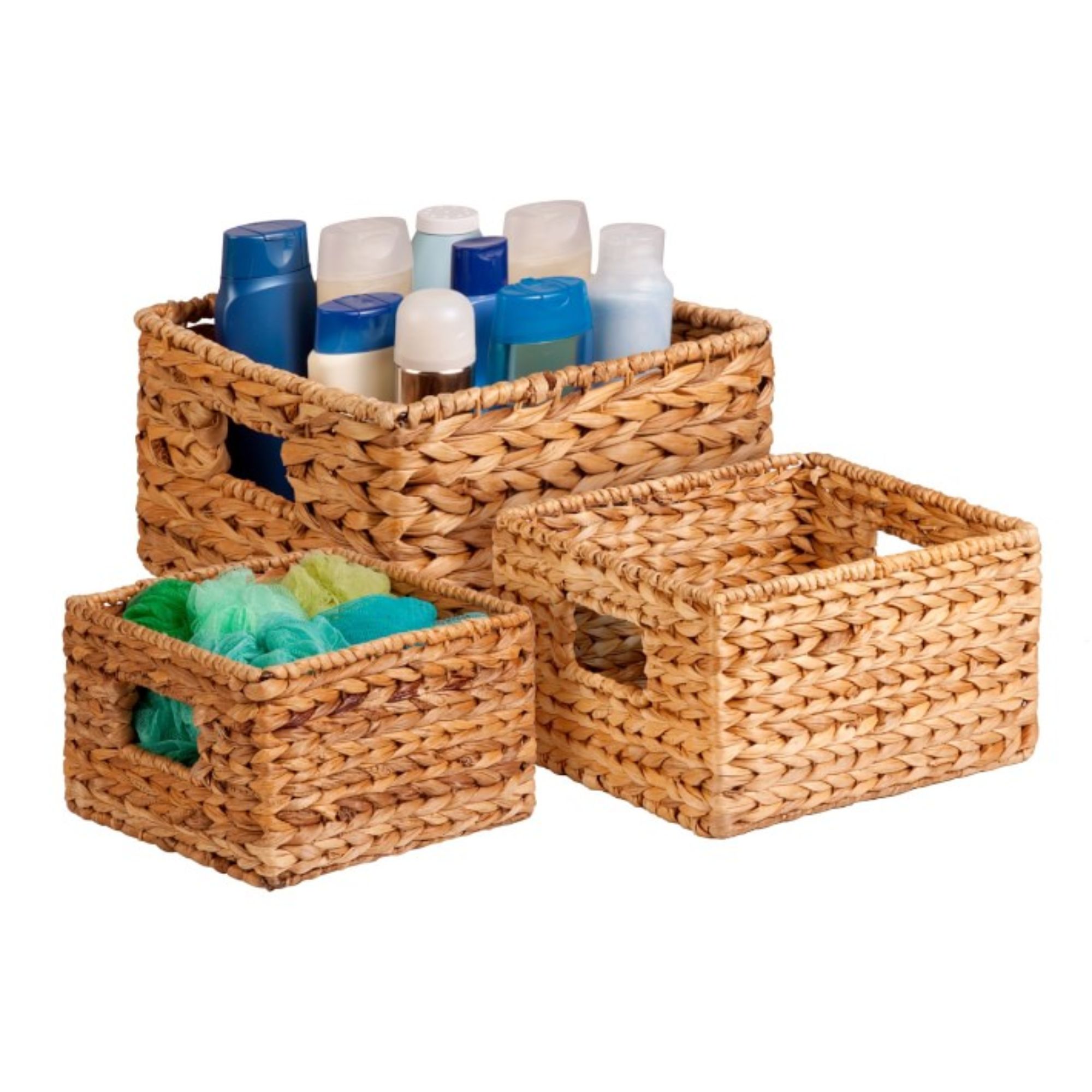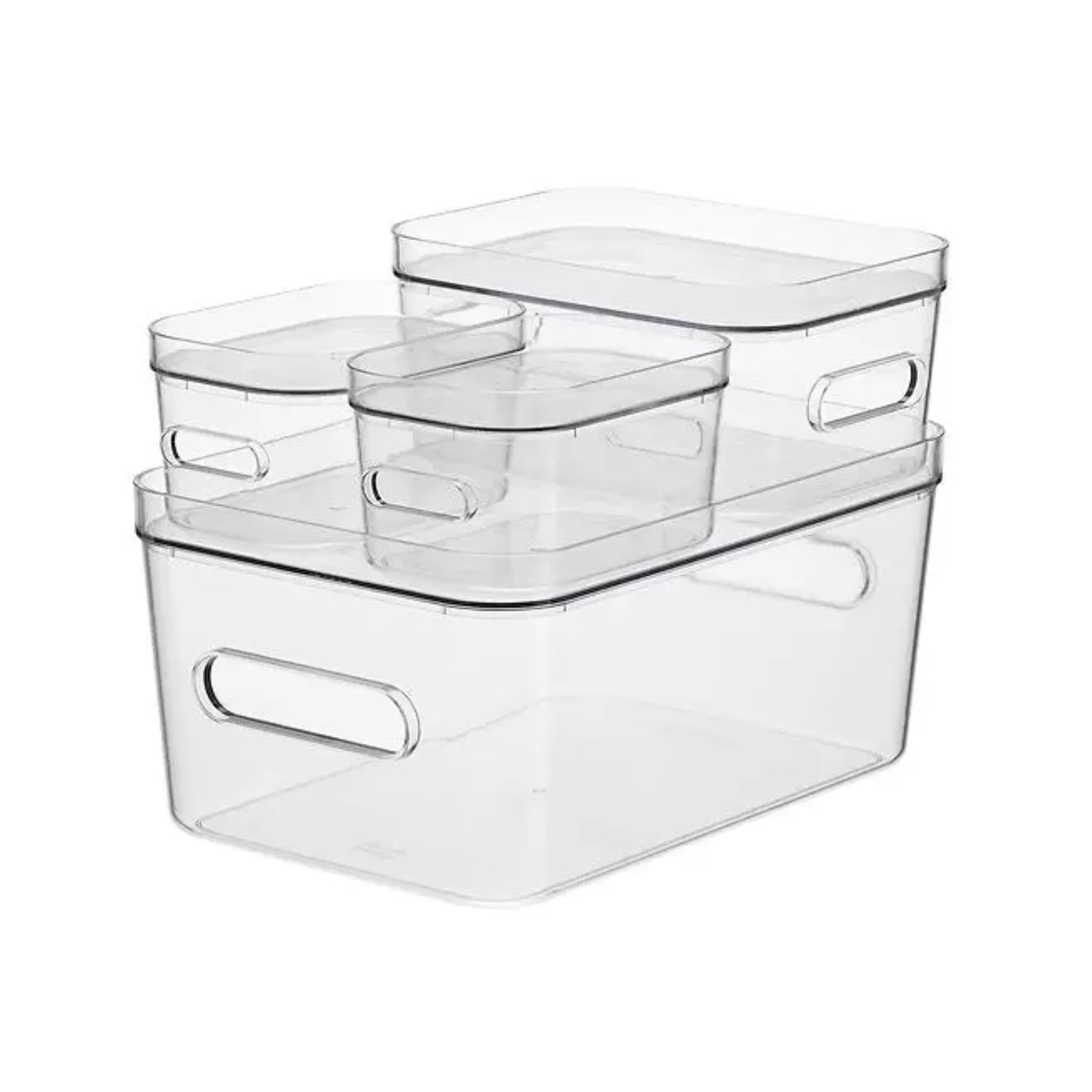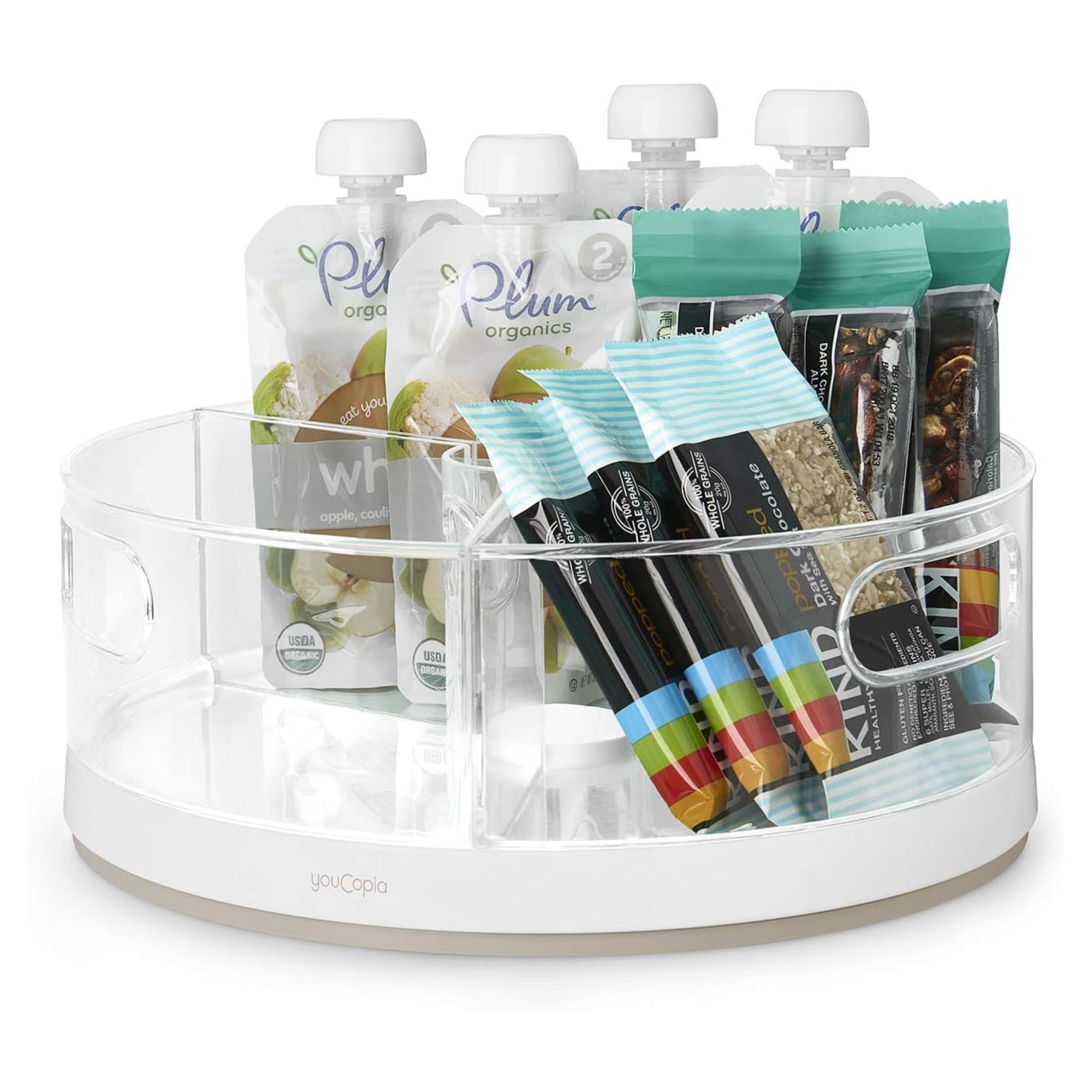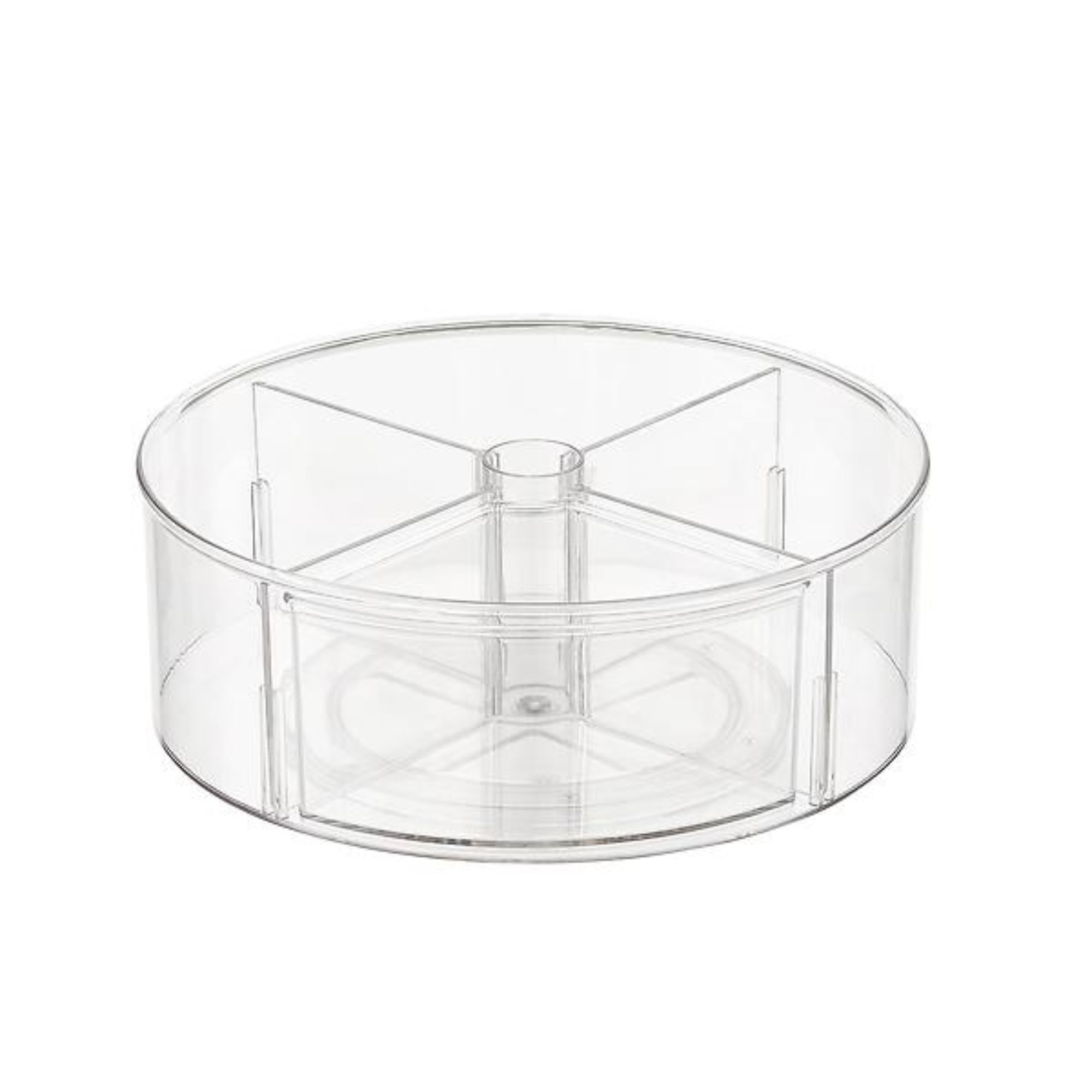What to do first when organizing kitchen cabinets – according to the pros
It’s tempting to jump straight in, but a step-based approach to organizing kitchen cabinets is far more productive – here’s what to do first
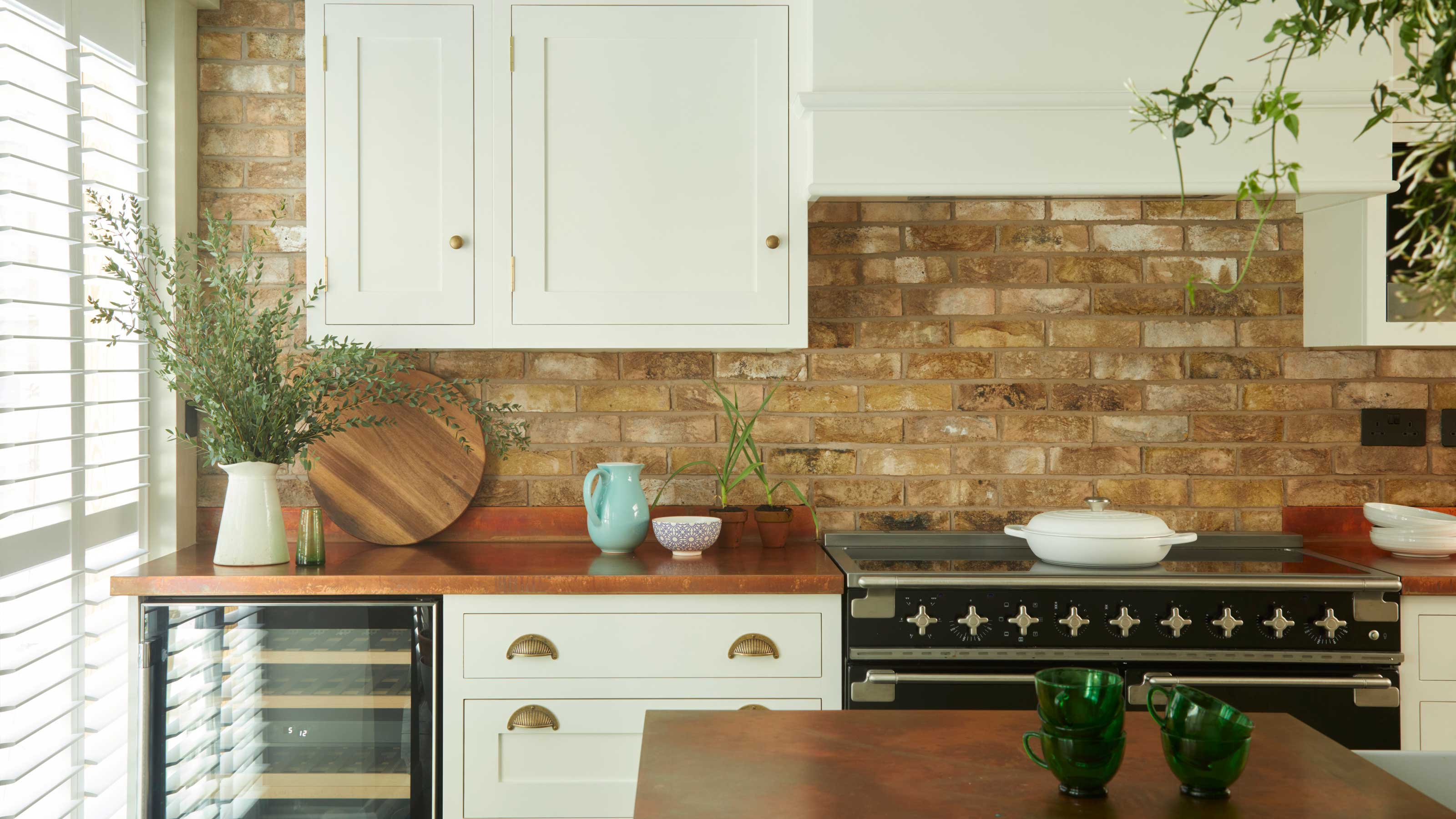
If you’re wondering what to do first when organizing kitchen cabinets, you’ve already ticked off priority number one, which is to give it some proper thought. Given how much they’re expected to hold and how often we root around in them on a daily basis, a quick ‘sort out’ just isn’t going to cut it, not if you want to keep them well-organized, at least.
Taking a strategic approach to organizing kitchen cabinets (and organizing kitchen drawers, for that matter) makes for a far more streamlined result, which not only makes them easier to use but can have a dramatic effect on how functional your kitchen ideas are overall.
‘Ensuring you’re making the best use of the storage space you do have means clutter is less likely to spill out onto visible work surfaces and food prep areas, so you can enjoy a stress-free cook and a tidier-looking kitchen, too’, says Millie Hurst, section editor at Homes & Gardens.
What to do first when organizing kitchen cabinets
While your kitchen storage ideas themselves may vary according to what type of kitchen cabinets you have, luckily, the things you should always do first remain the same regardless, so it’s pretty easy to get started. Here are our top tips, all expert-approved, of course.
1. Remove everything from your cabinets
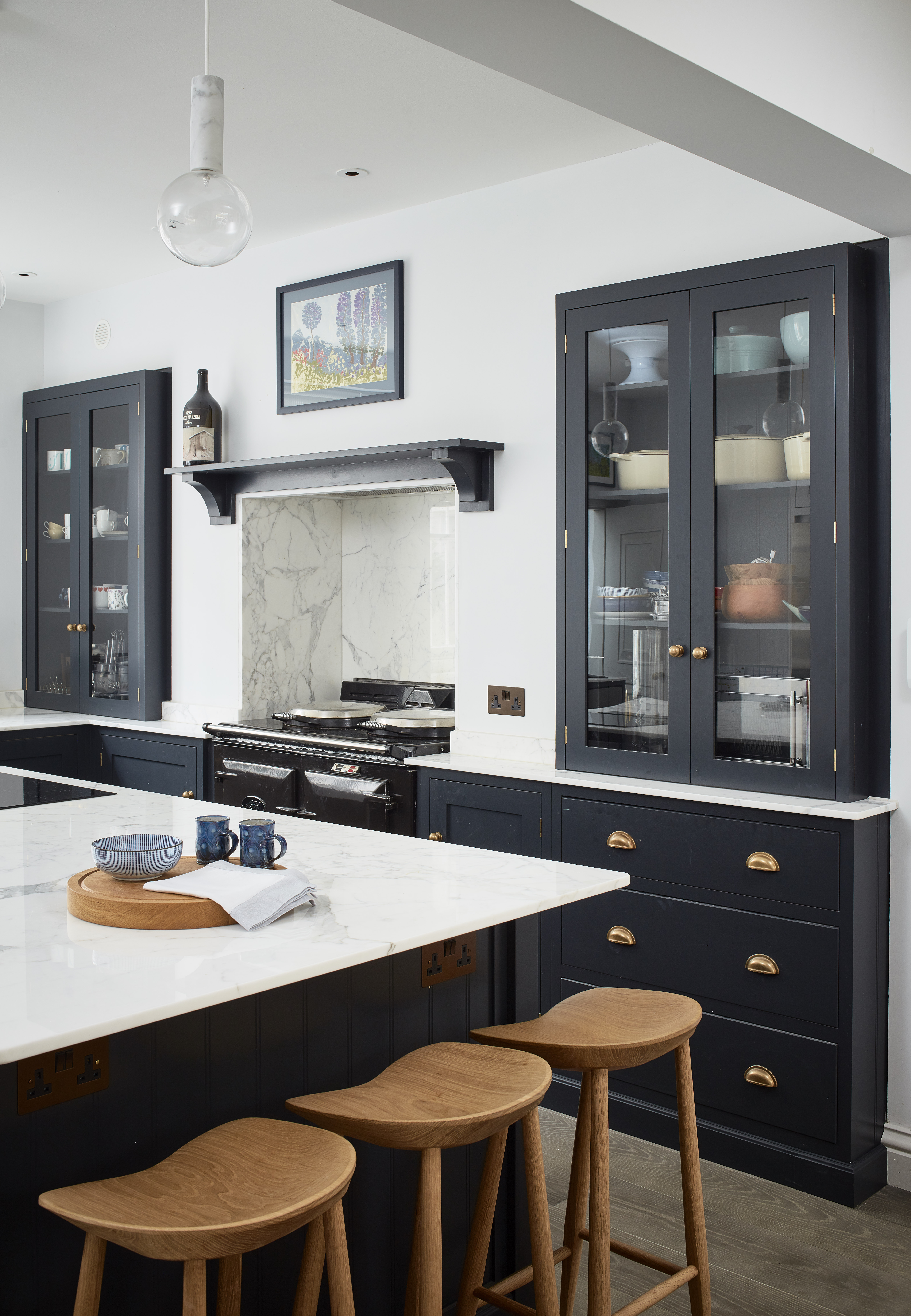
As any professional will tell you, it’s almost impossible to re-organize anything in situ. It’s a lot easier to leave items you’re not sure about where they are than it is to actively put them back, so, if you want the job done properly, everything needs to come out. Yes, everything.
Having said that, a word of advice – don’t try and tackle all your kitchen cabinets at once. It can be really overwhelming, not to mention impractical in a room you need ready access to throughout the day. Working through cabinet by cabinet, or category by category, will make the process feel more manageable.
2. Give them a good clean
While you no doubt include them when cleaning a kitchen, it’s not often they’re completely clean inside, so take the opportunity to clean your kitchen cabinets thoroughly. Hoover up debris (be sure to get right into the corners and joints) then wipe down with a cloth or sponge soaked in warm water and fairy liquid. Using a new sponge, wipe down again with warm water, then leave to dry.
3. Assess your kitchen essentials…

You’ve likely acquired an awful lot of ‘kitchen stuff’ over the years, from utensils and pans, to heirloom crockery and seasonal serveware, all taking up residence – and space – in your kitchen cabinets. A streamlined cookware collection is something that all the most organized kitchens have in common, so the first step to creating order is to undertake a really thorough declutter.
‘Your first step should be to assess what you currently have in your kitchen cabinets. Have a peeler that isn't sharp? Replace it. Have a melon baller that you haven't used in years? Time to pass it along to someone who will use it. Only once you have streamlined your cabinet contents are you ready to dive into how best to organize them in your kitchen,' says professional organizer Lauren Saltman, founder of Living. Simplified.
Finding it hard to let go of things? Check out our kitchen decluttering checklist to discover the items you can get rid of right now.
4. …and categorize them as you go
Breaking items down into categories, crockery, cooking utensils, cookware, glassware, small appliances, and so on, not only makes the decluttering process feel more manageable, but it also makes it easier to ‘zone’ your kitchen (more on that later).
5. Work out what’s going where

Before you start assigning your categories to your cabinets, step back and evaluate your kitchen storage as a whole. Cabinets are our go-to, but often items are better stored elsewhere in the kitchen (these are the six items not to store in your kitchen cabinets), or in the case of rarely-used or seasonal items, outside of it altogether.
‘Can you stack your pans together to save space or do you have headroom to hang them above the cooker? Would your bakeware be better in a rack rather than a heap? How many chopping boards do you need close to hand – could any be stored elsewhere to free up space?’, says Wendy Miranda, brand ambassador at Lakeland.
Next, consider your kitchen layout. Where you position your items will depend upon which ‘zone’ your cabinets fall into, as well as how you use your kitchen day-to-day.
Pans, utensils, and essential ingredients are best stored in cabinets next to the range or cooker top, aka the ‘cooking zone’, while sponges, cloths, and cleaning essentials are most practically located next to the sink, for example. If you like to entertain, ensure cabinets with crockery are located near a clear worktop for plating up, and keep cutlery and glassware in your kitchen island storage ideas, away from the main cooking area.
‘If you’ve got children in your household, consider placing their things at height-level, so they can be independent and helpful. Similarly, be sure anything you don’t want them having ready access to is stashed up high, sugary treats or anything sharp for example,' says professional organizer Kathryn Lord, author of More to Organizing, available at Amazon.
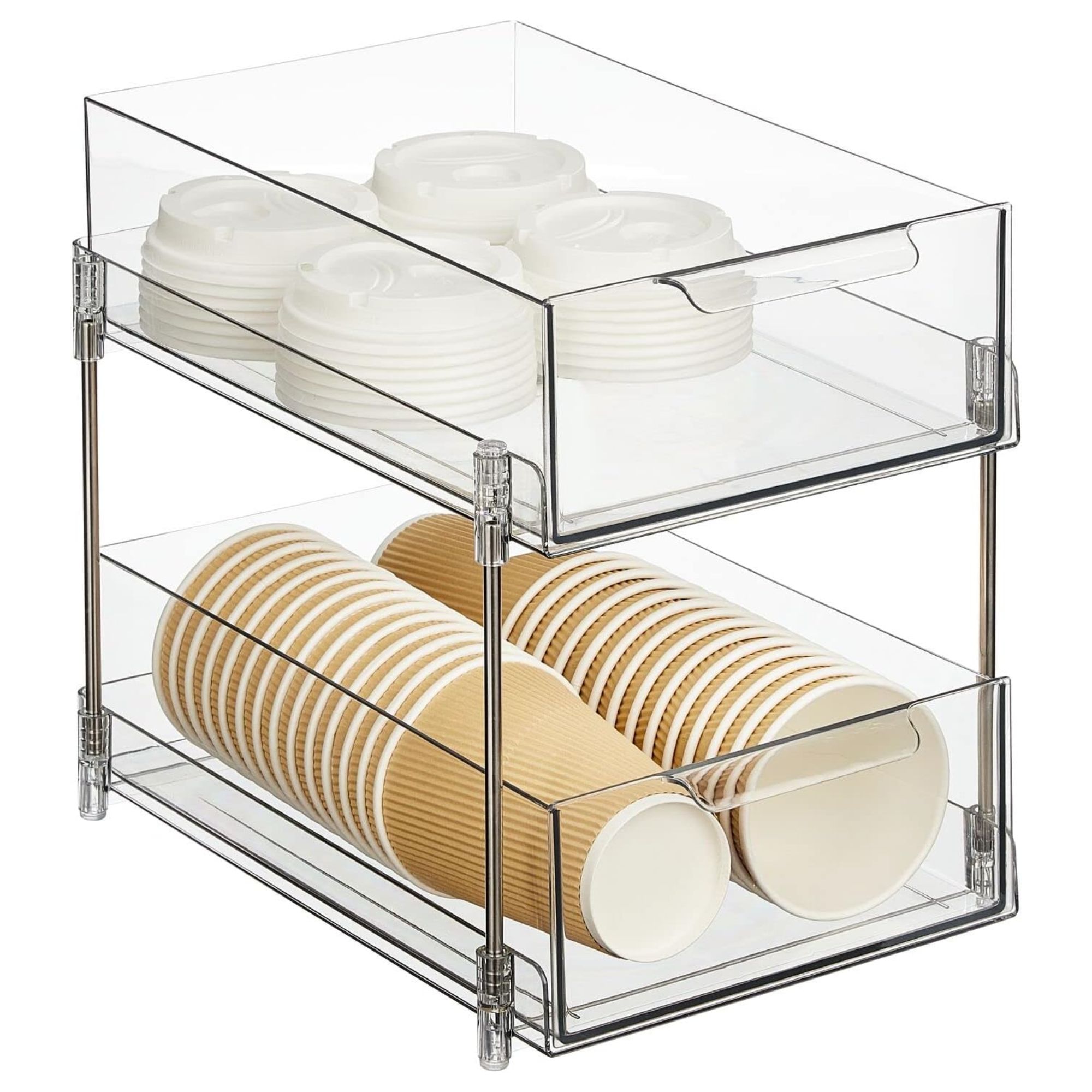
Our readers adored this organizer from Nate Berkus when we first covered it a few months ago. Nate's transparent organizer comes with a handy slide-out functionality that offers instant accessibility.

Kathryn helps busy parents organize their homes and routines with their children in mind. Not only an organizational expert, but Katherine is also a childcare expert too and has published a book, More To Organizing [available on Amazon], on organizing with children too.
6. Shift the shelves around

If you’ve got existing shelving in your kitchen cabinets, think about ways you could modify it to allow for better storage. ‘Many people forget you can actually do this, but taking advantage of vertical space in this way really helps cabinets both big and small live up to their full potential,' says professional organizer Vicky Silverthorn, founder of You Need a Vicky.
Depending on what you’re trying to store, you could create height for appliances, jars, and cleaning equipment, cubby holes for pantry ingredients, or add in an extra shelf or two up top for stowing seasonal serveware.

Vicky Silverthorn has been a professional organizer for over 10 years, helping people from all walks of life to declutter and organize their homes. As an expert in the industry, she believes that your wellbeing starts at home; if your home is in shape, other elements of your life will follow. Vicky has written Start with your Sock Drawer, an Amazon bestselling book on living a less cluttered life.
7. Assess your cabinet storage solutions – and improve them if you need to
Once you know exactly what’s going where, consider kitting out your kitchen cabinets so they suit what they’re storing perfectly. Doing this will maximize space and improve accessibility, particularly if you’re dealing with trickier areas, such as long and narrow kitchen cabinets, deep pantry shelves, or organizing corner cabinets.
As well as pull-out and pull-down mechanisms, stackable caddies and storage inserts can help you to utilize shelves, drawers, and cabinets from top to bottom while hanging racks on the back of the doors opens up all new realms of vertical storage options,' says Simon Glanville, managing director at A Place for Everything.
‘I always encourage people to start by measuring the cabinet space before investing in storage helpers. There’s a plethora of solutions out there, so you need to ensure you pick the right products so you’re not wasting space – or money,' adds professional organizer Lucy Mansey, founder of Organised by Lucy.
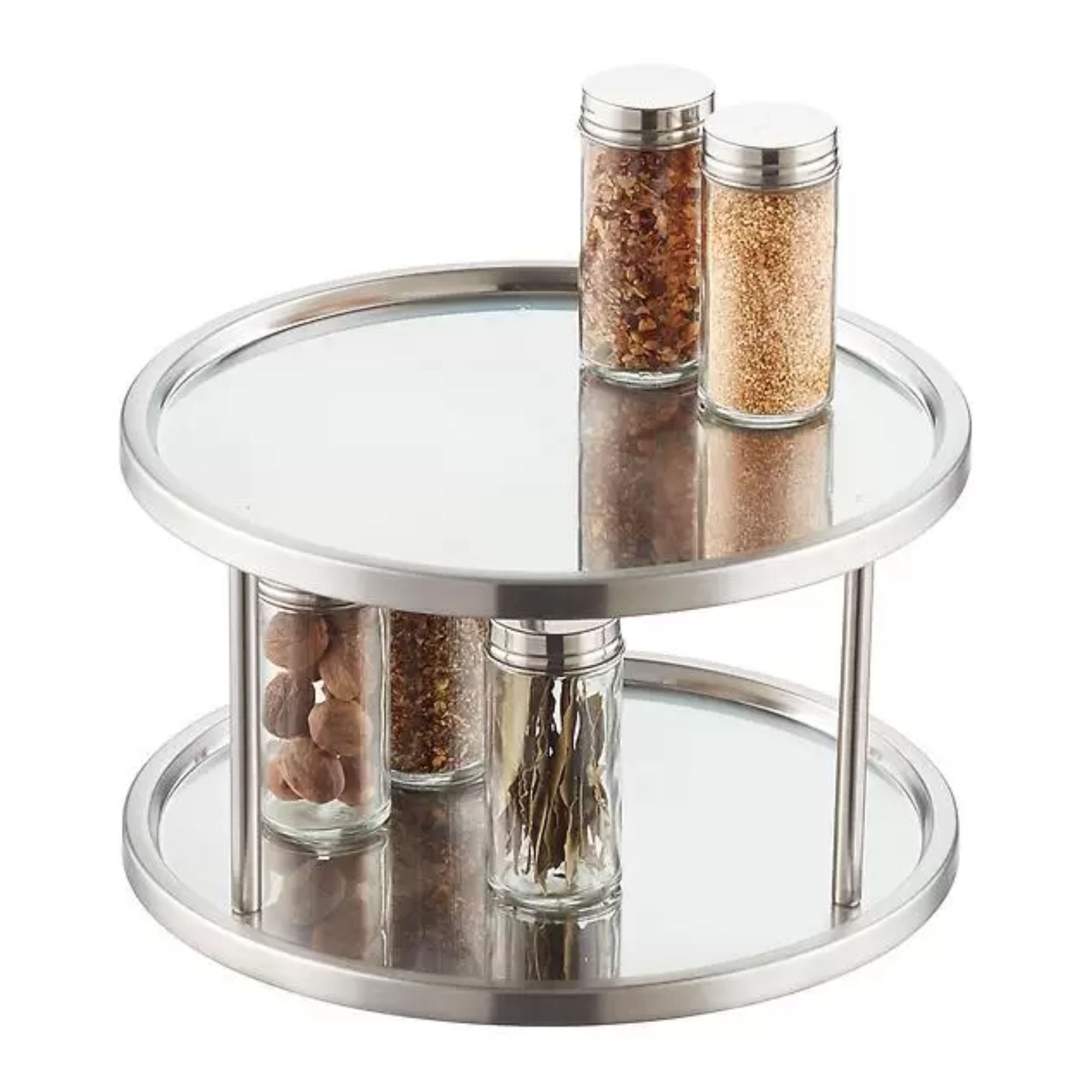
This Lazy Susan is workhorse that's perfect for high-traffic storage. It's rustproof stainless steel, so it's good for more humid rooms like bathrooms and kitchens.
FAQs
What is the first step in organizing kitchen cabinets?
As any pro will tell you, one of the biggest organizing mistakes you can make is to start before you’ve properly decluttered, and that’s certainly the case when it comes to kitchen cabinets. As one of the most hard-working storage areas in your home, they sure do accumulate an awful lot of stuff, and a lot of it you likely don’t need.
With that in mind, the first step in organizing kitchen cabinets is to have a thoroughly good clearout. Remove everything and work through each item, asking yourself whether you really need/want it. At the same time, ask yourself whether there’s anywhere else in the kitchen it might better be stored. These days kitchen drawers are just as effective at storing items usually designated to a cabinet; pots and pans, appliances, crockery etc, and wall-hung storage can be well-utilized, too.
Only once you’re left with a streamlined collection of kitchen cabinet essentials are you able to employ an effective organizational system. Decluttering is a step you just can’t afford to miss – organized clutter is still clutter, after all.
There’s no doubt that organizing overflowing kitchen cabinets can feel pretty full on, but knowing what to do first can make the whole process feel a lot easier, and we guarantee a better end result, too.
Sign up to the Homes & Gardens newsletter
Design expertise in your inbox – from inspiring decorating ideas and beautiful celebrity homes to practical gardening advice and shopping round-ups.
For 10 years, Tara King worked as a Content Editor in the magazine industry, before leaving to become freelance, covering interior design, wellbeing, craft and homemaking. As well as writing for Ideal Home, Style at Home, Country Homes & Interiors, Tara’s keen eye for styling combined with a passion for creating a happy – and functional – family home has led to a series of organization and cleaning features for H&G.
-
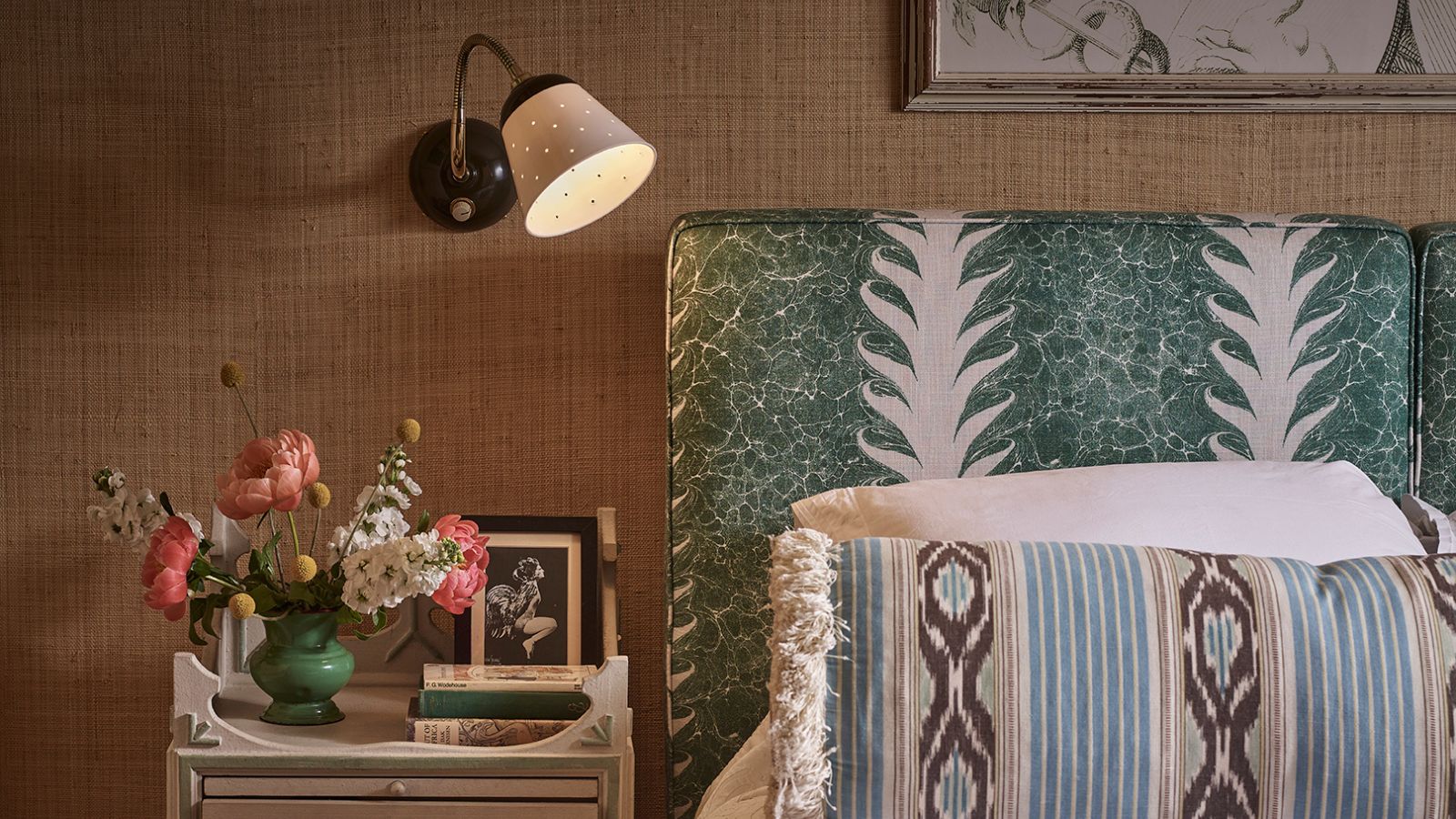 Do you need to turn the lights off when you leave a room? Experts have ended this time-honored debate once and for all
Do you need to turn the lights off when you leave a room? Experts have ended this time-honored debate once and for allOn or off? We delve into the details of this age-old dispute
By Chiana Dickson
-
 This Tudor decorating technique brings a 'cocooning' feel to Jon Bon Jovi's living room – but designers warn you need to be brave to follow his example
This Tudor decorating technique brings a 'cocooning' feel to Jon Bon Jovi's living room – but designers warn you need to be brave to follow his exampleThe singer uses wood to design a room that feels 'welcoming and rich in materiality,' but this century-old method comes with a warning
By Megan Slack
